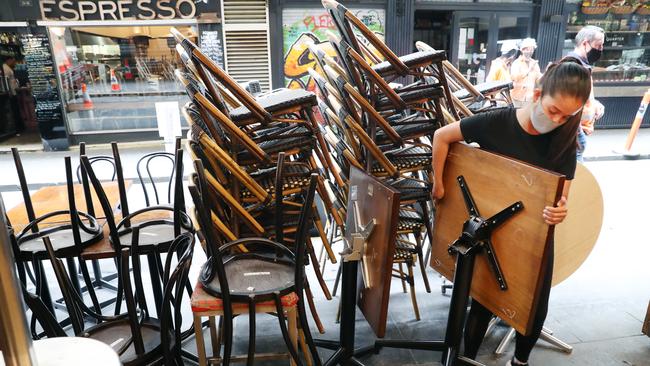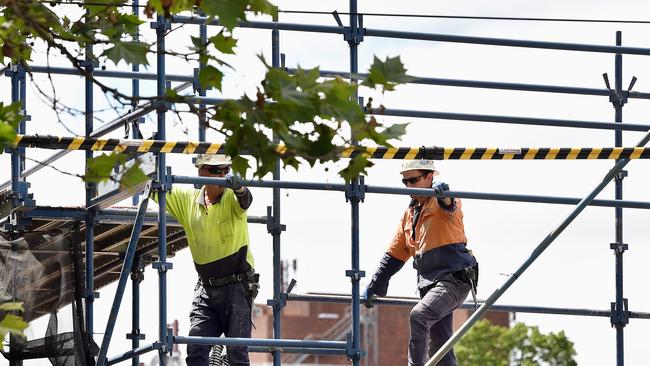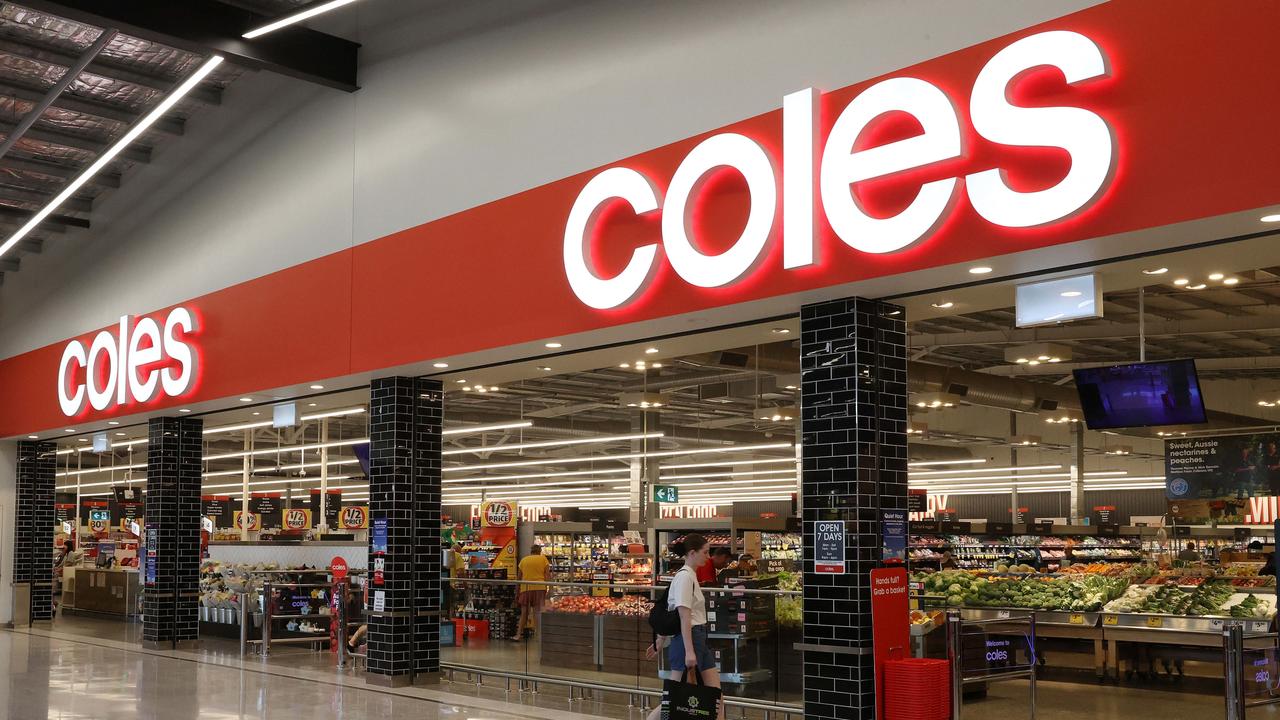Data reveals hospitality, construction sectors most at risk of insolvency
New data showing which businesses are at risk of insolvency reveals which jobs could be in danger, as one particular sector is forecast for harder times to come.

Retail
Don't miss out on the headlines from Retail. Followed categories will be added to My News.
Hospitality businesses are the highest at risk of going under, with the construction sector following closely behind.
A CreditorWatch business risk index report found the food and beverage sector remains the most at risk of insolvency with an annual 0.97 per cent of businesses going into insolvency on a rolling annual basis in March.
The construction sector ranked closely second with 0.70 per cent entering insolvency for the same period.
It comes after a brutal three year period of Covid-19 lockdowns and restrictions caused financial pressure for many businesses in each sector.
However, CreditorWatch warns insolvencies in the construction sector will continue to rise, and are yet to reach pre-Covid levels.

“The very low levels of insolvencies in the construction sector during the Covid-19 lockdowns suggest that a number of businesses remained in business that otherwise would not have, all else being equal,” CreditorWatch Chief Economist Anneke Thompson said.
“For every construction sector insolvency, there are a large number of companies, individuals, and banks that are impacted as the construction sector is such an important cog in the wheel of the wider property/development industry.”
Ms Thompson said the pressure on discretionary spending in Australian households is approaching its peak, as a large proportion of fixed rate home loans move to variable rate loans over the next few months.
Reserve Bank of Australia Governor Philip Lowe told Australians as late as November 2021 that the bank was likely to hold the cash rate steady at 0.1 per cent until 2024.
But since May 2022, the cash rate has risen to 3.6 per cent.

The rate hike has meant many people have cut back on discretionary spending, which has a flow-on effect to businesses already struggling, including those in the food and beverage sector.
“Overall, we expect that the pressure on discretionary spending in Australian households is approaching its peak, as a large proportion of fixed rate home loans move to variable rate loans over the next few months,” Ms Thompson said.
“While some larger non-discretionary related businesses will remain relatively immune to this spending risk, the food and beverage sector is particularly exposed, and it is just a matter of time before Australians begin to spend less (per capita) at restaurants and cafes than they did in 2022.”

Meanwhile, the CreditorWatch industry data found not everything was bad news for businesses, after March recorded the strongest bounce back in trade receivables data on record.
“This is an 86 per cent increase on the previous month’s trade receivables data, but still 5.6 per cent below trade receivables recorded in March 2021 and March 2020,” Ms Thompson said.
“What is clear is that this result is the antithesis of the weak month-on-month data that has been recorded since September 2022.
“However, given it is only one month’s worth of data, it is too early to draw any conclusions as to a definitive change in trend trade receivables.”
Originally published as Data reveals hospitality, construction sectors most at risk of insolvency



